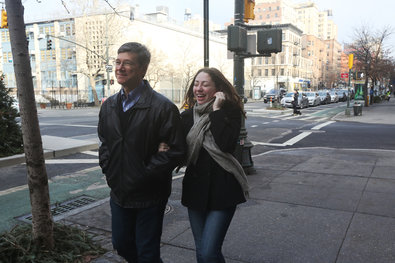After surreptitiously tracking the intruders to study their movements and help erect better defenses to block them, The Times and computer security experts have expelled the attackers and kept them from breaking back in.
The timing of the attacks coincided with the reporting for a Times investigation, published online on Oct. 25, that found that the relatives of Wen Jiabao, China’s prime minister, had accumulated a fortune worth several billion dollars through business dealings.
Security experts hired by The Times to detect and block the computer attacks gathered digital evidence that Chinese hackers, using methods that some consultants have associated with the Chinese military in the past, breached The Times’s network. They broke into the e-mail accounts of its Shanghai bureau chief, David Barboza, who wrote the reports on Mr. Wen’s relatives, and Jim Yardley, The Times’s South Asia bureau chief in India, who previously worked as bureau chief in Beijing.
“Computer security experts found no evidence that sensitive e-mails or files from the reporting of our articles about the Wen family were accessed, downloaded or copied,” said Jill Abramson, executive editor of The Times.
The hackers tried to cloak the source of the attacks on The Times by first penetrating computers at United States universities and routing the attacks through them, said computer security experts at Mandiant, the company hired by The Times. This matches the subterfuge used in many other attacks that Mandiant has tracked to China.
The attackers first installed malware — malicious software — that enabled them to gain entry to any computer on The Times’s network. The malware was identified by computer security experts as a specific strain associated with computer attacks originating in China. More evidence of the source, experts said, is that the attacks started from the same university computers used by the Chinese military to attack United States military contractors in the past.
Security experts found evidence that the hackers stole the corporate passwords for every Times employee and used those to gain access to the personal computers of 53 employees, most of them outside The Times’s newsroom. Experts found no evidence that the intruders used the passwords to seek information that was not related to the reporting on the Wen family.
No customer data was stolen from The Times, security experts said.
Asked about evidence that indicated the hacking originated in China, and possibly with the military, China’s Ministry of National Defense said, “Chinese laws prohibit any action including hacking that damages Internet security.” It added that “to accuse the Chinese military of launching cyberattacks without solid proof is unprofessional and baseless.”
The attacks appear to be part of a broader computer espionage campaign against American news media companies that have reported on Chinese leaders and corporations.
Last year, Bloomberg News was targeted by Chinese hackers, and some employees’ computers were infected, according to a person with knowledge of the company’s internal investigation, after Bloomberg published an article on June 29 about the wealth accumulated by relatives of Xi Jinping, China’s vice president at the time. Mr. Xi became general secretary of the Communist Party in November and is expected to become president in March. Ty Trippet, a spokesman for Bloomberg, confirmed that hackers had made attempts but said that “no computer systems or computers were compromised.”
Signs of a Campaign
The mounting number of attacks that have been traced back to China suggest that hackers there are behind a far-reaching spying campaign aimed at an expanding set of targets including corporations, government agencies, activist groups and media organizations inside the United States. The intelligence-gathering campaign, foreign policy experts and computer security researchers say, is as much about trying to control China’s public image, domestically and abroad, as it is about stealing trade secrets.
This article has been revised to reflect the following correction:
Correction: January 31, 2013
An earlier version of this article misstated the year that the United States and Israel were said to have started a cyber attack that caused damage at Iran’s main nuclear enrichment plant, and the article misstated the specific type of attack. The attack was a computer worm, not a virus, and it started around 2008, not 2012.
Article source: http://www.nytimes.com/2013/01/31/technology/chinese-hackers-infiltrate-new-york-times-computers.html?partner=rss&emc=rss






